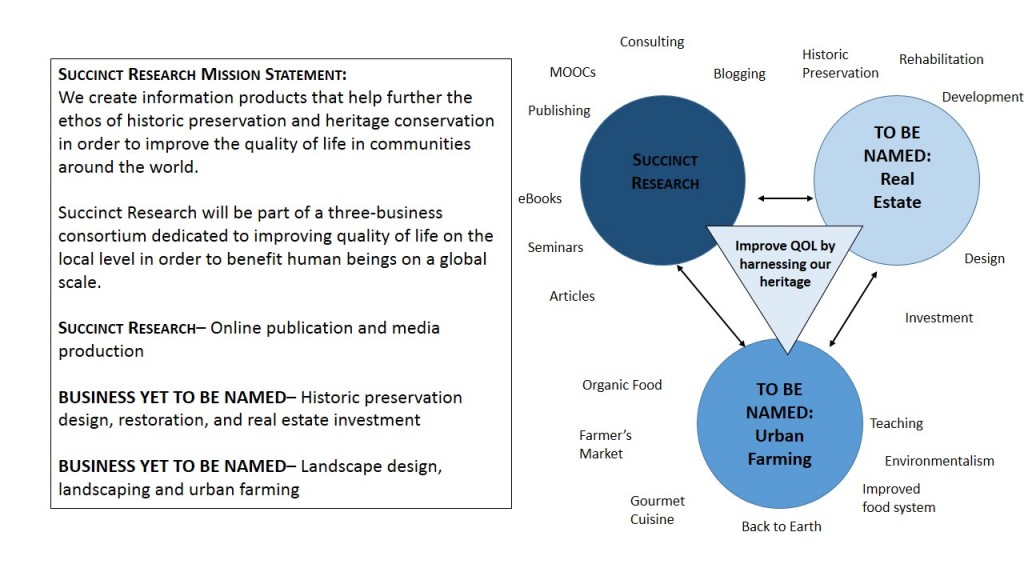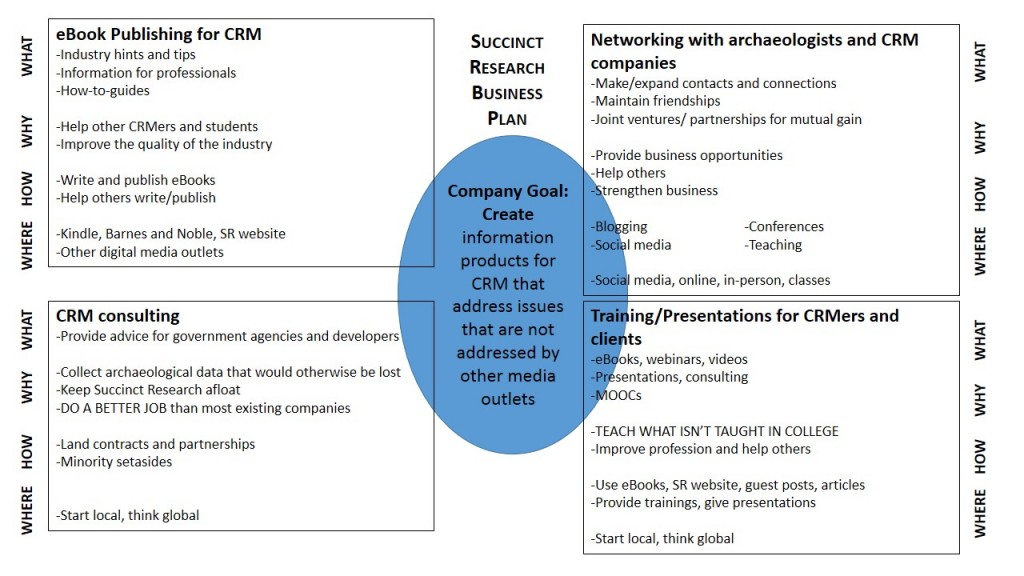 March, 2014 is the last month of #blogarch Part Deux. In addition to hosting an excellent discussion in the last few months about blogging, archaeology and points between, Doug Rocks-MacQueen posited a killer final question to end the series: Where do you plan on going with blogging or where would you like it to go?
March, 2014 is the last month of #blogarch Part Deux. In addition to hosting an excellent discussion in the last few months about blogging, archaeology and points between, Doug Rocks-MacQueen posited a killer final question to end the series: Where do you plan on going with blogging or where would you like it to go?
I thought long and hard about this question. Actually, I’m always thinking about archaeology and use my blog as an outlet for my musings, as a means to express myself, and as a way to stay in contact with other like-minded individuals. I find that maintaining my focus on cultural resource management archaeology and historic preservation keeps me focused on my dreams. This focus continually guides me toward the ultimate vision I see for my career.
So, Doug, here’s my answer: I will use blogging a part of my ultimate strategy to use historic preservation to improve the quality of life for local communities, the United States, and beyond.
Here’s how I plan on doing that:
I started Succinct Research to help other archaeologists find jobs, learn how to do CRMarch, and stay current on the CRM industry. I’ve been doing that for almost two years now and have had quite a few success stories. However, my experiences as a CRM archaeologist working for environmental and CRM-only firms has made me think deeply about the nature of our industry and what our skills are actually giving back to the world. Archaeology in a CRM context has generated an enormous amount of information regarding human pasts that would never have been known had it not been for environmental and historic preservation legislation. We are truly fortunate to have CRM because it has drastically expanded our knowledge of how humans have existed in the world.
While our knowledge of the past has exploded in the last 50 years, I’ve been wondering about the effect all of that archaeology and preservation has had on our societies. We archaeologists know more than ever before, but the Average Joe on the street has no idea what his/her ancestors were doing 2,000, 500, even 50 years ago. We could just say, “that’s because the Average Joe is an idiot that spends too much time on Facebook and watching ‘Game of Thrones.’” Or, we could reflexively look at ourselves and see what more we can do to combat the onslaught of ridiculous shows that are playing a defining role in how the mainstream views our profession.
How can we teach the general public about archaeology and historic preservation? How can we change the way the public views us? How can we tell the rest of the world about the value of historic preservation?
The best way to change the public’s perception of historic preservation and archaeology is to get down in the mud on their level and, one-by-one, show them how they directly benefit from knowledge of and preserving the past.
My 10-year plan involves the creation of three separate businesses that are tightly focused on distinct niches, but are interconnected in a reciprocal relationship that reinforce each other. This strategy also helps each business stay afloat by hiring each other as a consultant/client, which helps revenue flow between the three companies. It also provides a chance for archaeologists, preservationists, architects, planners, landscapers, construction companies, and master gardeners to connect with each other and the general public in positive ways.
The goal is to provide connections with the widest group of individuals and companies as possible in order to demonstrate how the past can benefit us in the present and build a fan base that will help defend historic preservation from being legislated out of existence.
Company #1: Succinct Research—Right now, blogging and eBook publishing through Succinct Research how I’m reaching a larger audience. Ultimately, I will expand SR into a larger digital publishing and media creation company that focuses on historic preservation and CRM archaeology. In the future, SR will begin creating webinars, MOOCs, and seminars dedicated to helping bridge the knowledge gap between college and the industry. In the future, the company will expand operations and create a variety of information products on a wider range of preservation issues.
The company has four main emphases that are illustrated below.
The role of Succinct Research is to be a digital media production company dedicated to connecting industry professionals and conveying historic preservation information.
Company #2: YET TO BE NAMED—The problem with most cultural resource management companies is their income streams are not diversified enough to provide residual or steady income. This forces them to constantly stay in the hunt for new consulting projects and perpetuates the “feast or famine” nature of the industry. These companies do not consistently buy assets that help solidify the company’s value, bring in residual income, or provide a resource that can be sold in an emergency. My solution is to create a company that purchases historic buildings and homes, renovate/modernizes them (without compromising their historic integrity), and leases/rents or sells the improved properties. Companies like this already exist, but I’m going to try and do it like my new role model Bill Naito.
There are several reasons to invest in historic or potentially historic property. First, properties in historic districts retain their value and have stronger potential to appreciate at a higher rate than non-historic property. They are less susceptible to huge shifts in value brought about by speculation. Buildings built between the 1930s and 1960s are within most city’s early suburb ring and are closer to downtowns, which have been the focus of most urban revitalization schemes in the U.S. Thus they are well positioned to benefit from revitalization programs, further bolstering the property’s value. Remodeling and refurbishing historical buildings creates a greater number of jobs and circulates more money thorough the local community than new construction. Finally, real estate provides a tangible asset that can be sold in the event of a drop in the company’s revenue (or they can be sold to other companies, such as Succinct Research, to create tangible assets for that organization).
This historical real estate company will focus on buying properties and restoring them to the way they looked during the period in which they were built. The properties will also be modernized in such a manner that their historical integrity is not compromised. Most importantly, the entire process will be documented, blogged, and advertised by Succinct Research. These purchases will also provide case studies for SR’s books, presentations, workshops, and classes.
The role of Company #2 is to preserve historical and potentially historic buildings, help maintain vibrant communities with interesting architecture, and demonstrate the financial benefit of historic preservation.
Company #3: ALSO YET TO BE NAMED—Historically, most households in detached, single-family dwellings in the United States maintained a garden. Our grandparents and great grandparents took pride in raising their own vegetables and livestock as a way to assert their self-sufficiency and individuality. During the Great Depression and World War II, gardening was not only advocated, it was considered our patriotic duty as Americans. This wasn’t environmentalism or “going green”. It was being practical. As a result, each household was taking an active part in its own provisioning and reducing household expenditures while still providing healthy food for household residents.
Although gardening is still the most popular hobby in the United States, most of us don’t grow any of our own food. Why? What happened to us?
Several things happened in the last two to three generations. Both men and women started working outside the home. We work longer hours. Children are spending fewer and fewer hours outside. None of us went to farms as children. We forgot how to grow produce and raise livestock. Food got cheaper. We became more used to the grocery store. Basically, we lost our connection to the land.
Many American homes are on huge lots that could easily support productive gardens, but most of us don’t have the time or the know-how. That’s where the third company comes into play. I plan on creating a landscaping and urban farming company that creates and maintains gardens for individuals, companies, and institutions. In addition to helping people grow their own food, this company will sell excess produce at farmers markets and to boutique restaurants. This company will draw upon the skills of professional master gardeners to create unique gardens optimized to each eco zone that will generate organic fruit and vegetables.
Succinct Research and Company #2 will also be integral to this plan. The historical real estate company will lease land to the urban farming company, creating revenue for the real estate company and providing productive agricultural land for the urban farming company. The entire process will provide material for Succinct Research’s eBooks, classes, presentations, ect. Digital media created by Succinct Research will spread the word about the benefits of having your own garden (what CSA is closer to your dinner table than your own back yard?) and why it’s our responsibility as 21st century urban dwellers.
The goal of Company #3 is to use past knowledge to create healthy produce and increase self-sufficiency on a household level.
Will this plan work?
I don’t really know how all of this will pan out, but I do think it will work. The three companies have different strengths and weaknesses. They also provide business opportunities for each other and diversify each company’s revenue stream. This is unlike anything I’ve ever seen before, so I have a fairly good chance at being an innovative concept (just like the Titanic).
Why am I getting a PhD if this is all I want to do?
I ask myself this all the time. This is my plan for the United States. However, I also want to be a professor and conduct international CRM/heritage conservation projects some day. I need a doctorate for that.
Where the hell did you come up with this?
By reading blogs, books, and articles, just like you.
How will this help improve the view of historic preservation and archaeology in the public’s eye?
People will see comely buildings in their neighborhood that have been rehabilitated to their historical splendor. They will see how a little elbow grease and planning can turn an eyesore house or building into a vibrant community asset. They will directly benefit from the increased value of surrounding properties and cool places to live and work. The general public will also see what their ancestors, who were more closely tied to the land than current populations, ate and grew in their back yards. Archaeologists have been amassing a wealth of data telling us what foods people ate in the past and we can use this information to build vibrant gardens. They will also see how bountiful their own yard can be and how much can be produced in such a small place. They will directly benefit from eating and buying produce that was created not just within miles of their homes but within a few hundred meters. Urban farming is less energy intensive and utilizes land that, oftentimes, used to be farmland in the past. Most importantly, the Internet provides us with a system that we can use to spread this information and teach individuals to do the same thing for themselves.
The Average Joe will see how concepts and ideas that were commonplace in the past are wholly relevant to urban life in the present.
Historic preservation is increasingly harnessed by local governments to revitalize their communities that were adversely affected by suburbanization. Americans are tapping into heirloom, locally grown, and organic food production streams at an alarming rate. Farmer’s markets are the fastest growing segment of the food industry. The Internet has allowed us to spread information at a rate never seen before in human history. Cultural resource management is on a downward spiral primarily because the CRM companies do not know how to channel multiple streams of income into their businesses. Also, most companies have not found a way to make their knowledge of the past work for them. CRM is being consumed by one-size-fits-all environmental companies at an alarming rate.
I may not have the perfect solution for this problem, but at least I have a plan. And, blogging is central to the execution of that plan.
If you have any questions or comments, write below or send me an email.
 “Resume-Writing for Archaeologists” is now available on Amazon.com. Click Here and get detailed instructions on how you can land a job in CRM archaeology today!
“Resume-Writing for Archaeologists” is now available on Amazon.com. Click Here and get detailed instructions on how you can land a job in CRM archaeology today!
 Small Archaeology Project Management is now on the Kindle Store. Over 300 copies were sold in the first month! Click Here and see what the buzz is all about.
Small Archaeology Project Management is now on the Kindle Store. Over 300 copies were sold in the first month! Click Here and see what the buzz is all about.
Join the Succinct Research email list and receive additional information on the CRM and heritage conservation field.




